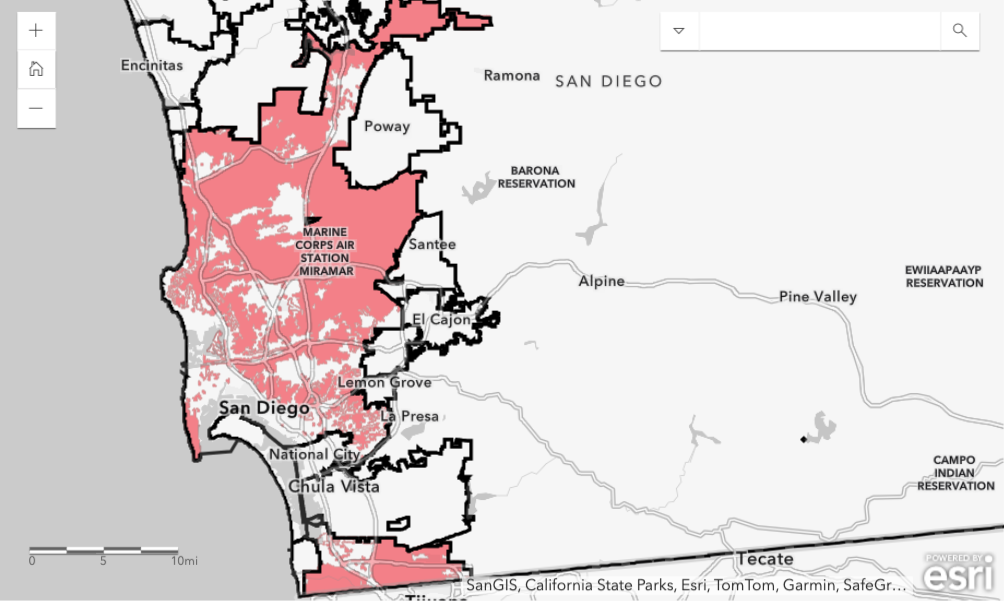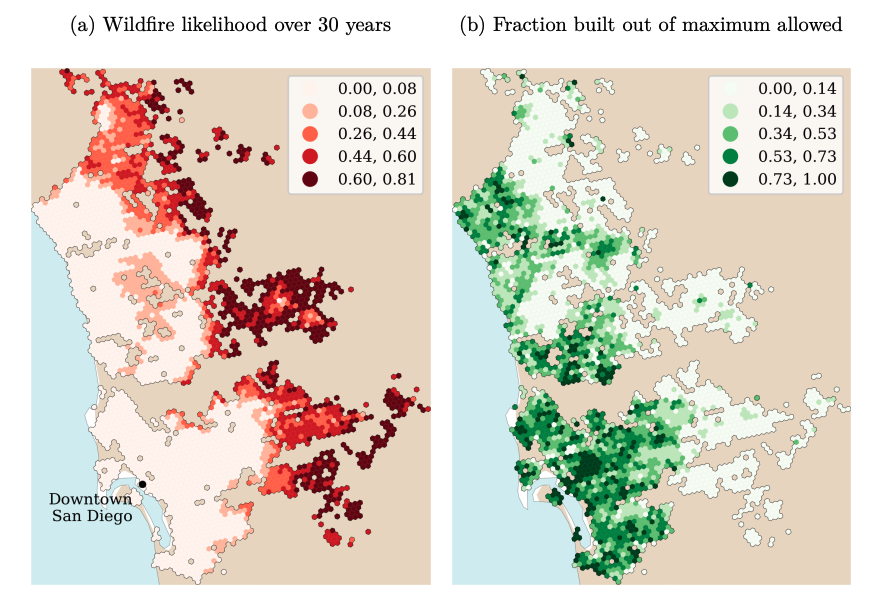SAN DIEGO (KGTV) — Fires have burned thousands of acres all over San Diego County this year, threatening homes and lives along the way.
The Border 2 Fire was the most recent to prompt evacuations, and while Cal Fire managed to get it under control, the issue of homes in fire-risk areas has never been more relevant.
The city of San Diego, following state law, has identified very high fire hazard severity zones within city limits and mapped these zones online.
"Hazard is based on physical conditions that create a likelihood that an area will burn over a 30 to 50-year period," the city's fact sheet says.
These zones cover roughly 70% of the city, and from 2021 to 2023, 6,508, or 32%, of the 20,201 new homes permitted in San Diego were in very high fire hazard areas.
That means more than a little more than two-thirds of the new homes were not in very high fire hazard severity zones, but residents still have concerns.
Clairemont residents proposed a moratorium on construction projects in very high fire hazard zones, citing the Palisades and Eaton fires, OB Rag reported.
In an Op-Ed for Times of San Diego, University City resident Bonnie Kutch questions the city’s plans to add thousands of new homes to the area she says will only see more extreme and unpredictable wildfires. (Kutch has been arguing against the University City plan for years, with concerns ranging from children’s safety to a lack of affordable homes.)
Residents of Harmony Grove, in unincorporated San Diego County near Escondido, expressed their concerns over a new development proposed in the same area that the Cocos Fire burned in 2014.
Cal Fire says this is also a fire hazard zone just outside the city limits, and locals are concerned that adding more people and cars to the neighborhood could impact evacuation routes in the event of a fire.

But the city says it must balance these concerns with the housing crisis that affects San Diegans who can’t afford the high cost of living.
“Allowing for more homes provides more opportunities for current and future community members and their families to be successful in San Diego,” the Planning Department said in an email. “The City’s housing programs are aimed at addressing this crisis and meeting the needs of all people.”
The Planning Department pointed out that much of the future growth that has already been approved will not involve building in fire-prone areas.
“Over the last several years, the City Planning Department has approved community plan updates in Mission Valley, Midway-Pacific Highway, Downtown, Kearny Mesa, Mira Mesa, Hillcrest and University,” they said. “Each of these plans focused growth and development in existing communities near transit. Most of these areas are not within a Very High Fire Hazard Severity Zone.”
Planners are also updating the Clairemont, College, and Mid-City Community Plans and, in the process, evaluating the risks posed by climate change, fire risks, and other factors.
“The City’s housing programs help to support the production of homes,” the Planning Department said. “These programs as well as the update of community plans are some of the ways in which we can help to address our long-term state mandates and provide housing in locations that are near transit to help meet our housing and climate goals.”

The Planning Department also noted that homes that are built in very high fire hazard severity zones are required to follow Chapter 7A of the California Building Code and Section 337A of the California Residential Code mandating the use of fire-resistant materials, maintaining defensible space, and managing vegetation to protect structures and occupants and minimize risk.
CAYIMBY, a group that lobbies local and state leaders to accelerate home building, wrote in 2023 that land use policies push the bulk of California housing into parts of the state prone to regular fires and floods, putting families at risk.
“Regulations that make it all but impossible to build in existing urban areas [are] driving up housing costs in cities,” the group wrote, “and forcing nearly all new housing out into what’s known as the ‘wildland-urban interface.’”
CAYIMBY cited a UCLA paper that suggests restrictive land use policies in San Diego are responsible not just for high prices but also push more residents into fire-prone areas.
“Absent land-use liberalization to allow more infill housing,” CAYIMBY wrote, “Mounting fire risk will affect nearly twice as many San Diego households in years to come.”
As of Jan. 2025, there are approximately 265,650 homes in San Diego's Very High Fire Hazard Severity Zones.



